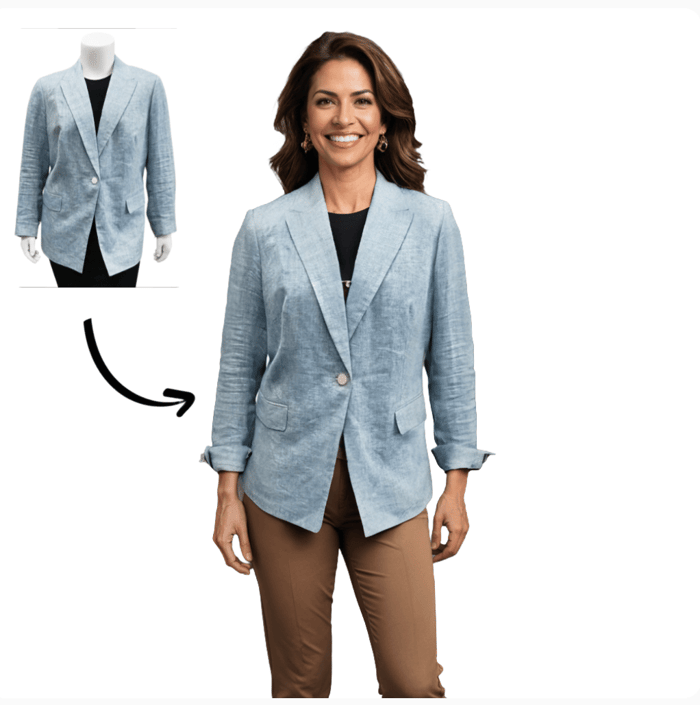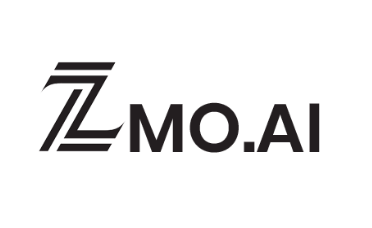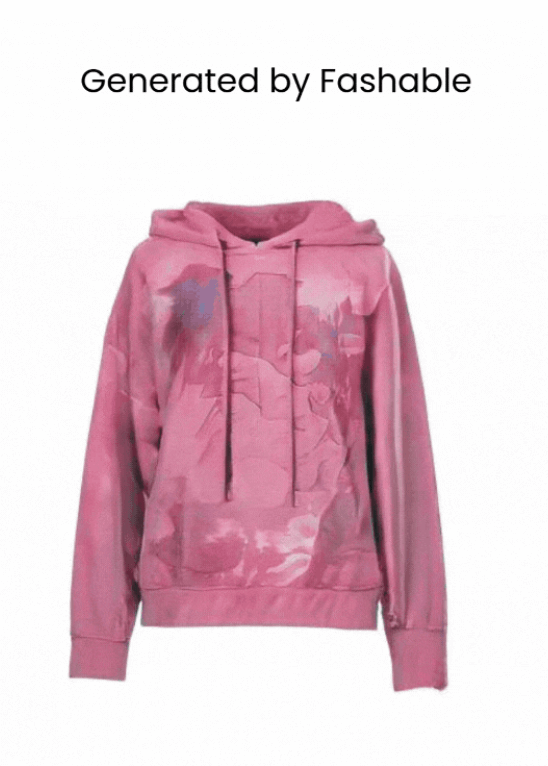Best AI Clothing Design Software for Next-Level Fashion Design
Table of Contents
- What to Look For in AI Fashion Designer Tools
- How AI Is Reshaping Fashion Development
- The Role of AI clothing design software in Sustainability and Efficiency
- How AI Clothing Design Supports Creativity
- Top 10 AI Clothing Design Software Tools for Modern Fashion Creators
- Potential Shortcomings of AI Fashion Designer Tools
- Final Thoughts
The fashion industry is entering a new era in which artificial intelligence and digital design tools play a fundamental role. As brands look for more efficient, flexible, and sustainable ways to create collections, AI clothing design software is emerging as a solution. These platforms help coordinate the design process, reduce production costs and release new levels of creativity by turning ideas into visual prototypes in a matter of minutes. Whether you are a family business or a more professional brand you can reshape the way you approach designing by adopting the right AI fashion design software.
Clothing design offers features like automated sketch generation, pattern simulation, fabric behavior testing, 3D garment fitting, and even photorealistic rendering of garments on digital models. This technology allows faster product development and better communication between designers, manufacturers, and clients.

What to Look For in AI Fashion Designer Tools
Before investing in an AI clothing design software platform, it's important to evaluate what features and capabilities best suit your needs and goals. Here are some of the key elements to consider:
1. User Interface and Accessibility: An easy interface can significantly reduce the learning curve, especially for independent designers or teams without in-house developers. Look for drag and drop features, guided tutorials, or systems that allow collaboration using online clouds.
2. Sketch to Design Automation: The ability to convert drawn sketches or descriptive prompts into design mockups is one of the most exciting developments in AI fashion because it is a huge time-saver. Tools that offer this feature allow designers to jump from concept to visual quickly, saving hours of manual work.
3. 3D Visualization and Fitting: Realistic visualization helps designers see how garments will fit and behave in real life before they are produced. It is because of that it is preferable to look for platforms that offer dynamic 3D simulation, adjustable avatars, and options to test movement and layering.
4. Fabric and Pattern Simulation: Some software includes tools to simulate textures, transparency, and fabric stretch which helps designers predict how a design will react in real world conditions and make smarter material choices.
5. Virtual Model Integration: Garment presentation matters, it is not the same a flatlay photo, a ghost mannequin or a model wearing the piece of clothing. Platforms that allow you to showcase designs on diverse digital models give brands more control over how they communicate their collections online. One of the most relevant at the time is Modelia, which I will develop further later in this text.
6. Export Options: Whether for manufacturing, marketing, or further editing, the ability to export high quality files (images, 3D files, or videos) is essential.
7. Price and Scalability: Pricing taxes vary from free tools with limited features to high-end software with commercial licenses. Choose one that aligns with your current needs and budget and that can grow with your business.

How AI Is Reshaping Fashion Development
Artificial intelligence is helping designers to create with fewer restrictions. It accelerates the design phase, improves fit and function, and minimizes waste. It often includes predictive analytics that can forecast trends based in an intense data analysis, helping brands design collections that align with consumer demand.
In product development, AI speeds up the prototyping stage by simulating 3D garments on virtual models. It can analyze fabric performance, flag construction issues, and enable quicker approvals, helping companies move from idea to sample faster than ever as I have mentioned before. Additionally, by using AI to test and simulate different cuts or materials, designers can ensure garments are both stylish and wearable before any fabric is cut.

The Role of AI clothing design software in Sustainability and Efficiency
Fashion’s environmental footprint is a growing concern. The fashion industry is the second most contaminating in the world, thousands of tons end up every year stacked in developing countries or end up burned, a practice that emits a large amount of gases into the atmosphere. AI clothing design software contributes to sustainability by reducing the number of physical samples needed, thus minimizing fabric waste, shipping, and water use. Digital sampling and virtual try-ons also reduce the carbon footprint of traditional production processes.
With real time design previews and instant revisions, teams can make faster decisions without producing dozens of iterations. The result is a cleaner, more efficient design pipeline with less overhead and environmental cost.
How AI Clothing Design Supports Creativity
There’s a misconception that AI replaces human creativity, but, in reality, it enhances it. Designers can use AI clothing design software tools to generate multiple variations of a single idea, explore different color palettes or silhouettes, and experiment with styles they might not have considered otherwise.
Many AI clothing design software tools allow users to input inspiration such as a mood board, descriptive text, or an image, and see several interpretations returned. This process can inspire fresh thinking, reduce creative blocks, and lead to more innovative final products. By automating tedious tasks like sizing, layering, and pattern alignment, designers are freed to focus on storytelling and originality.

Top 10 AI Clothing Design Software Tools for Modern Fashion Creators
The fashion industry is undergoing a digital revolution, and artificial intelligence is at the heart of it. From generating realistic designs and testing garment fit to creating photorealistic visuals, AI clothing design is helping designers, brands, and creatives streamline workflows and explore new levels of creativity. In this guide, we’ll explore ten of the most innovative tools in this space, each with its unique features, pricing models, and target audiences. Among them, Modelia stands out as a powerful platform for fashion visualization and content creation.
Resleeve
Resleeve is a free and accessible AI clothing generator ideal for fashion designers and creators looking to generate variations quickly. Users can upload mood boards or sketches and let the AI generate multiple interpretations based on color schemes, fabric types, and design cues.

How It Works
Resleeve takes a user’s input and creates photorealistic images or pattern variations. This is perfect for early ideation and experimentation.
Pricing
Resleeve currently offers a free tier with limited generations and a paid model for extended use. Pricing may vary depending on user needs and output resolution.
Pros
Quick design generation
Ideal for ideation and early-stage development
Beginner-friendly interface
The New Black
The New Black is an AI fashion design platform that allows users to describe garments in plain text. Whether it’s a wedding dress, a set of casual tees, or high-fashion bags, the AI interprets the prompt and delivers a finished design.

How It Works
Users input a short description of the garment they want like "formal business shirt in a cotton-linen blend" and the data base produces visual designs that match the criteria. It can also generate variations in color and silhouette.
Pricing
The New Black offers a freemium plan with basic access. Premium plans include more renders, commercial rights, and faster generation.
Pros
Natural language input
Fast turnaround
Generates ready-to-present visuals
CLO 3D
CLO 3D is a leading name in digital garment visualization. While not entirely AI generated, its advanced simulation features use AI to test fit, movement, and fabric behavior.

How It Works
Designers build 3D garments using templates or imported patterns. The software simulates wearability, drape, and dynamic behavior, allowing real-time adjustments before physical production.
Pricing
Pricing starts at $50/month with educational and enterprise packages available.
Pros
Professional-grade 3D simulation
Excellent for fit testing and prototyping
Supports fabric physics and layering
Adobe Illustrator with AI Enhancements
Adobe Illustrator is the standard for graphic design, and recent AI features like auto-colorization and pattern generation make it a valuable tool for fashion designers.
How It Works
Using Adobe’s Sensei AI, Illustrator can now predict color themes, suggest design improvements, and automate repetitive tasks like resizing or layering, streamlining the creative process.
Pricing
Illustrator starts at $20.99/month as part of Adobe Creative Cloud.
Pros
Deep design control
Integrated AI tools for creative boost
Access to Adobe’s ecosystem of fonts, images, and plugins
Modelia
Modelia is a next generation innovative AI clothing design software built specifically for fashion designers, e-commerce brands, and content creators who need to generate high-quality visuals from simple inputs. What sets Modelia apart is its ability to visualize clothing on virtual models and transform basic garment images into studio-quality content.

How Modelia Works
Users upload an image of a garment or a simple sketch. Modelia then removes the background, enhances textures, and fits the garment onto hyper realistic virtual models. The platform allows users to choose poses, settings, and even lighting preferences to match the brand’s aesthetic.
The AI automatically adjusts fabric flow, body fit, and shadows to deliver a finished image that looks like it came from a professional photo session.
Modelia’s Key Features for Creators
High-resolution image generation with background removal
Drag-and-drop styling with pose and environment control
Virtual model customization (skin tone, body type, posture)
Automated garment fitting based on the garment’s cut and material

Modelia’s Competitive Advantage
Modelia offers a powerful blend of image enhancement and fashion visualization in a single tool. Unlike platforms that only provide sketches or flat renderings, Modelia produces lifelike fashion visuals that can be used for product pages, portfolios, marketing campaigns, or social content.
1. Fashion Visualization at Scale
Whether you're designing a collection or updating an e-commerce catalog, Modelia lets you visualize dozens of garments with minimal input. This eliminates the need for studio bookings, live models, and post-production editing.
2. AI Video Creation
One of Modelia’s standout features is the ability to generate short, dynamic videos from a single garment image. These clips showcase the product in motion on a virtual model, perfect for social media, online ads, or animated photoshots. This functionality offers unmatched value when compared to other tools in the market.
Pricing
Modelia operates on a freemium model:
Free Tier: Limited exports and resolution
Pro Plan: Custom pricing based on volume, includes HD videos, unlimited exports, and priority support
Pros
Specialized in fashion visuals
Combines AI image enhancement, background removal, and modeling
Reduces cost and time of traditional photoshoots
Enables automated video content creation
ZMO.AI
ZMO.AI is focused on generating virtual clothing designs and digital models. Its main appeal is for online retailers and digital fashion brands looking for fast asset creation.

Features
AI-generated outfit previews
Product display enhancements
Integration with social selling platforms
Pricing
Free trial with premium plans starting at $25/month.
Fashable
Fashable generates digital fashion sketches and concept designs for fashion education and personal portfolios. It’s designed for ideation and rapid prototyping.

How It Works
Input mood boards or descriptive keywords and receive editable design sketches and illustrations.
Pricing
Free tier available; premium plans offer more detailed outputs and commercial usage rights.
StyleGAN
Developed by NVIDIA, StyleGAN is an open-source AI engine capable of generating high-quality synthetic images, including fashion models and garments.

Usage
Requires technical knowledge but offers immense flexibility for custom applications in digital fashion.
Pricing
Free to use, requires local installation and technical setup.
Vana
Vana is an AI-based platform for personal avatars and digital styling. It is ideal for virtual fashion shows, metaverse integrations, and 3D avatar customization.
Features
Personal avatar generator
Outfit visualization for digital platforms
Pricing
Free plan with paid customizations available.
Botika
Botika is a solution tailored for e-commerce clothing brands. It helps generate diverse product images by adapting garments to models of different ethnicities, poses, and expressions.

Features
Model diversity engine
Garment adaptation
Marketplace integration
Pricing
Pricing available on request for enterprise clients.
Potential Shortcomings of AI Fashion Designer Tools
While AI clothing design software brings a wealth of opportunities, it is not without its limitations.
1. Creative Limitation: AI may not always understand nuanced aesthetics, cultural context, or the emotional impact of design. Designers still need to guide and interpret results.
2. Quality Control: Auto-generated designs can sometimes lack polish or realism. Manual tweaks are often necessary to align output with a professional brand standard.
3. Dependency on Inputs: Garbage in, garbage out. If the prompt, sketch, or image uploaded lacks clarity, the result will likely fall short.
4. Learning Curve for Advanced Tools: While many tools offer simple interfaces, mastering professional platforms like CLO 3D or Adobe still requires time and training.
5. File Compatibility: Not all AI tools export in formats suitable for manufacturing or integration into other design systems. Always check compatibility with your production pipeline.
6. Cost for Premium Features: While entry-level options may be free, most advanced tools charge for full access. This can be limiting for independent designers working on a budget.

Final Thoughts
AI clothing design software is pushing the boundaries of what’s possible in fashion creation. These tools help reduce waste, speed up timelines, and enable more inclusive and experimental design processes. For designers and brands ready to embrace innovation, these platforms offer a new way to create, iterate, and visualize fashion that meets the demands of a rapidly evolving industry. By understanding what to look for in AI tools and being aware of their limitations, you can find the right solution to take your creative vision from concept to reality faster and smarter than ever before.
While many platforms like Resleeve and CLO 3D offer strong technical foundations, Modelia shines for its complete visualization ecosystem. With AI images, videos, and styling tools in one place, it stands out as the most robust solution for modern fashion creators who want to stay ahead of the curve.
How would you rate this article:
Related Articles
- 3D Virtual Try-On: How Technology is Revolutionizing Online Shopping and Fashion
- AI Person Generator: Generate Unique and Realistic People with AI
- Sketch to AI Art: How Designers Are Creating Digitally
- Best 7 Botika Alternatives You Should Check Out in 2025
- Top 8 Uwear AI Alternatives for E-commerce Fashion Imaging
- How to Use an Outfit Visualizer for Fashion Inspiration
- Shopify vs PrestaShop: A Complete Comparison for Sellers
- 7 Best fashion AI tools for designers
- What Are Digital Outfits? How AI Is Powering Virtual Style
- Wedding Dress Design: Inspiration & Sketch Ideas


